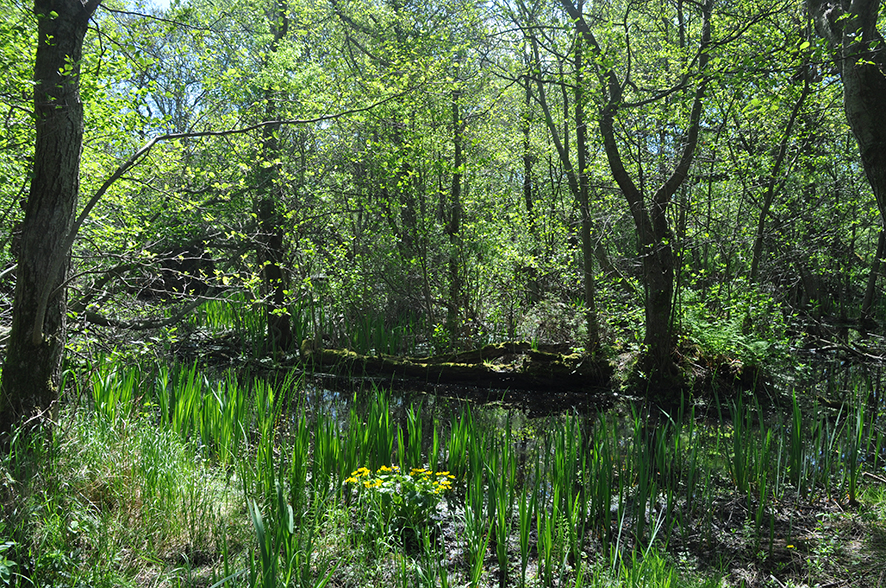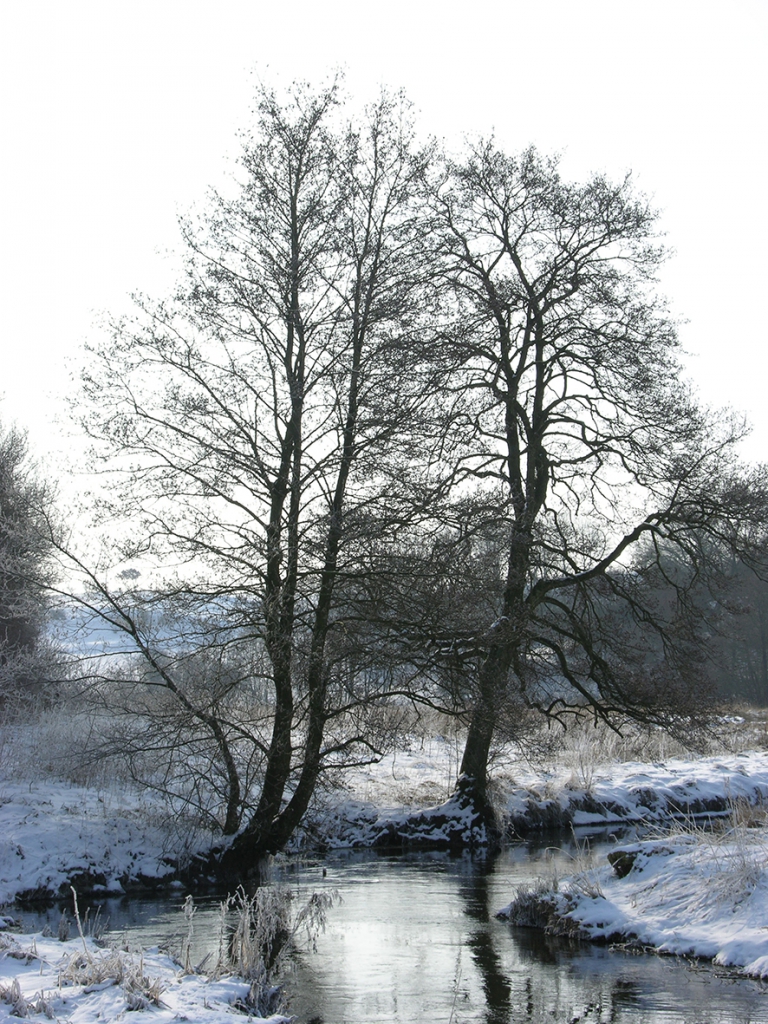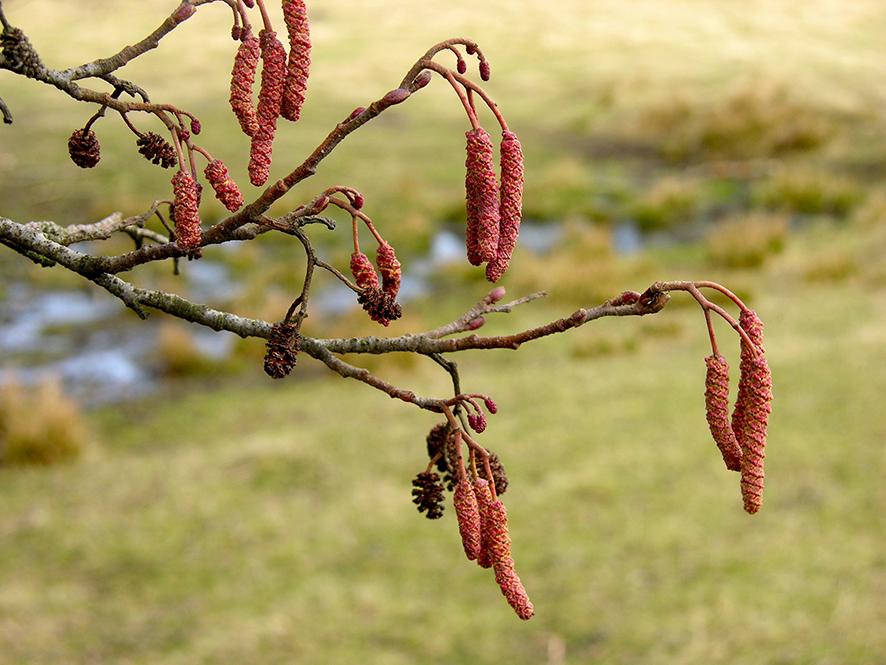Alder
- Bleeds when the tree is felled
The tree has its Danish name ”rødel” (red alder) because the wood becomes stained red when the tree is felled. When the sap runs from the newly-felled wood, it almost looks as if it is bleeding. The alder grows along watercourses and bogs, where the roots often stretch out under water. In order to ensure an adequate oxygen supply to the roots, the trunk forms so-called stilt-roots forms, which start at the trunk and support the tree. As parts of the stilt roots protrude from the ground, they can absorb oxygen here, which can seep deep into the flooded roots. Alder wood does not absorb water and can stay long under water without rotting. Therefore, it has been used for foundations for houses, lining wells and dugout canoes. Alder wood is a very light kind of wood, which was previously popular for clogs. Clogs made of alder are said to be ”as light as a feather”.

Alder trunks, elves and elf-struck
An old hollow alder stump that is found in the bog is called an ”alder trunk”. Elves are supposed to live under here. At dusk, when the mist rises from the meadows and marshes, they say that bog wife is brewing. Then the elf girls will dance in the mist. From the front, they look wonderfully beautiful, but from the back they are hollow in the back like an alder trunk. The elves could bewitch or enchant people who went through the bog at night. Then you became ”elf-struck” and the priest had been summoned to ”read” over the victim in order to break the spell.

Facts: The alder tree grows to about 10m high and 8m wide and has a slightly conical crown. The green leaves are roundish and serrated. The tree has long, red male catkins and small, cone-shaped female catkins. The alder tree is most easily recognised by the small bunches with alder-cones that are first green and then turn brown when they mature and the seeds fall out. The alder tree grows in humid conditions in bogs and along watercourses and lakes.


